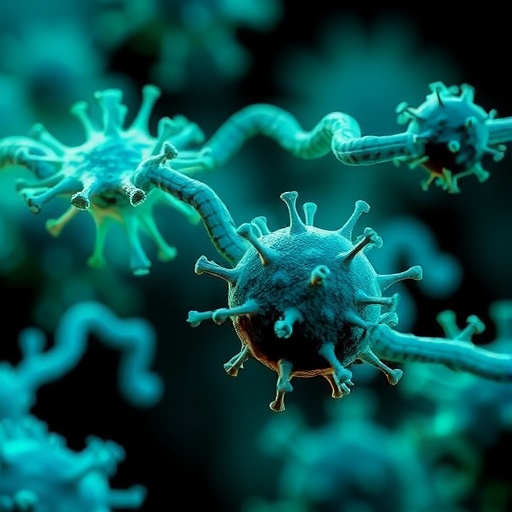The realm of protein research has unearthed an intriguing post-translational modification known as S-nitrosylation (SNO). Characterized by the addition of a nitric oxide (NO) group to a cysteine residue within a protein, S-nitrosylation has emerged as a critical regulator of numerous biological processes. This includes modulating protein stability and activity, influencing enzymatic reactions, and altering cellular signaling pathways. The breadth of S-nitrosylation’s impact extends into various health conditions, implicating it in cardiovascular diseases, metabolic disorders, respiratory issues, neurodegeneration, and even various forms of cancer. Despite its ubiquity and significant role in cellular dynamics, the mechanisms underlying protein S-nitrosylation and its implications for disease progression have remained somewhat enigmatic, primarily due to the challenge of detecting and quantifying SNO proteins, especially when they exist in low abundance.
To bridge this gap in our understanding, researchers have been actively pursuing innovative methodologies to profile S-nitrosylated proteins on a proteome-wide scale. A particularly promising advance in this area involves the development of a novel chemical probe named SNO-TRAP. This probe incorporates a triphenylphosphine thioester linked to a biotin molecule via a polyethylene glycol (PEG) spacer. The design of SNO-TRAP allows for the selective enrichment of S-nitrosylated proteins in complex biological samples, thus paving the way for enhanced analytical capacity using mass spectrometry (MS). With SNO-TRAP, researchers can precisely identify the S-nitrosoproteome across various tissues, providing a broad view of how S-nitrosylation may affect physiological and pathological processes.
In a groundbreaking protocol detailed in a recent publication, the process of isolating and profiling S-nitrosylated proteins using SNO-TRAP in conjunction with mass spectrometry is outlined comprehensively. The protocol begins with meticulous tissue sample preparation, ensuring that the proteins of interest are appropriately handled to preserve their post-translational modifications. Following this, the synthesis of the SNO-TRAP probe is performed under an inert argon atmosphere. Such a controlled environment is crucial as it minimizes oxidative damage and ensures the integrity of the reactive components involved in the SNO tagging process.
Once the SNO-TRAP probe has been synthesized, the next step involves the in situ labeling of S-nitrosylated proteins within the sample. The chemical reaction facilitated by the SNO-TRAP probe leads to the formation of a disulfide–iminophosphorane, which serves as a unique labeling tag for the modified proteins. This specificity not only allows for the effective capture of S-nitrosylated species but also enhances downstream analytical accuracy by removing non-target proteins that could obscure the detection of SNO modifications.
Post-labeling, the subsequent analysis involves digesting the chemically tagged proteins, followed by selective capture using streptavidin, which binds tightly to the biotin component of the SNO-TRAP. Such techniques enable researchers to concentrate the S-nitrosylated peptides, significantly improving the signal-to-noise ratio for subsequent mass spectrometric analysis. The liberated free cysteine residues can then undergo relabeling with N-ethylmaleimide, further ensuring that only the relevant peptides are quantified in the final analysis.
This robust method not only enriches S-nitrosylated peptides across various tissues, including the human and mouse brain but also facilitates a thorough, proteome-wide identification of these modifications. The dynamic nature of S-nitrosylation, often characterized by its transient expression, makes such comprehensive profiling both a significant challenge and a monumental achievement in the field of proteomics. The quantification of S-nitrosylated proteins via Orbitrap mass spectrometry results in invaluable insights into the functional consequences of these modifications on cellular behavior, potentially identifying new therapeutic targets for disease intervention.
The timeline for the entire process, from synthesis of the SNO-TRAP probe to the final mass spectrometric measurements, spans approximately five days for the synthesis phase, followed by an additional 2 to 2.5 days dedicated to sample preparation. The quantification and analysis require about five more days, making the comprehensive analysis a time-intensive yet worthwhile endeavor that promises to shed light on the complexities of protein S-nitrosylation.
By employing these innovative strategies, researchers are poised to unveil the intricacies of the S-nitrosoproteome, revolutionizing our understanding of how S-nitrosylation influences human health and disease. As the world of biomedical research continues to evolve, the methods developed for profiling S-nitrosylated proteins not only hold promise for advancing basic science but also pave the way for novel therapeutic strategies aimed at mitigating a range of pathological conditions. Ultimately, the work surrounding the SNO-TRAP probe exemplifies the intersection of cutting-edge chemistry and biology, offering hope for breakthroughs that can change the landscape of disease treatment and management.
This ongoing journey into the world of protein modifications illustrates the complexity of biological systems, where subtle changes can lead to significant functional consequences. As more researchers adopt and refine these methodologies, the pivotal role of S-nitrosylation in cellular function and disease will undoubtedly garner the attention it deserves, ushering in a new era of precision medicine. With each advancement, the scientific community moves one step closer to fully unraveling the enigmatic nature of S-nitrosylation and its potential implications for the future of health care.
The detailed exploration of S-nitrosylation through SNO-TRAP exemplifies the passion driving research forward. As researchers continue to adopt such innovative techniques, we can anticipate a heightened appreciation for the subtle yet profound ways in which protein modifications govern cellular dynamics. The future looks bright for the quest to understand these essential biological processes, heralding a new chapter in the quest for effective disease-modifying therapies.
In conclusion, the methodology outlined in this study not only illuminates the path toward understanding S-nitrosylation but also serves as a template for future research endeavors. The capabilities of SNO-TRAP, in conjunction with mass spectrometry, represent a significant advancement in proteomics, providing a powerful tool for scientists seeking to unveil the complexities of protein function in health and disease. As ongoing and future research builds upon this foundation, the landscape of molecular biology will undoubtedly reveal more about the fundamental processes that sustain life.
As we continue to explore the implications of O-nitrosylation in the context of various diseases, the insights garnered from such pioneering research may be instrumental in the development of targeted therapies that leverage these molecular mechanisms for better health outcomes. The potential of S-nitrosylation in regulating cellular behavior offers a glimpse into a transformative future in biomedical science.
Indeed, the advancements enabled by the SNO-TRAP technique open doors for exciting research possibilities, enhancing our understanding of protein modifications and their roles in disease progression. Through rigorous investigation and innovation, the scientific community stands poised to unlock the therapeutic potential of S-nitrosylation, further blending the worlds of chemistry and biology. As we navigate this promising intersection, the pursuit of knowledge remains at the forefront of scientific inquiry.
Subject of Research: Profiling of S-nitrosylated proteins using the SNO-TRAP probe and mass spectrometry detection.
Article Title: Proteome-wide profiling of S-nitrosylated proteins using the SNO-TRAP probe and mass spectrometry-based detection.
Article References:
Yang, H., Amal, H., Tannenbaum, S.R. et al. Proteome-wide profiling of S-nitrosylated proteins using the SNO-TRAP probe and mass spectrometry-based detection. Nat Protoc (2025). https://doi.org/10.1038/s41596-025-01282-1
Image Credits: AI Generated
DOI: https://doi.org/10.1038/s41596-025-01282-1
Keywords: S-nitrosylation, proteomics, mass spectrometry, SNO-TRAP, post-translational modification.
Tags: cellular signaling and S-nitrosylationimpact of S-nitrosylation on health conditionsimplications of S-nitrosylation in disease progressioninnovative techniques in protein profilingmass spectrometry in proteomicspost-translational modifications in biologyrole of nitric oxide in protein regulationS-nitrosylated proteins detection methodsS-nitrosylation in protein researchSNO-TRAP chemical probeunderstanding protein dynamics through S-nitrosyl





